Montenegro |
|
|
|
| Übersicht – Contents: | |
Diese Seite ist Teil des Projektes
Montenegro |
|
|
|
| Übersicht – Contents: | |
Flaggen – Flags: |
|
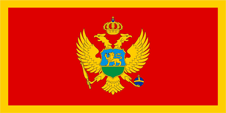 |
seit/since 2004, |
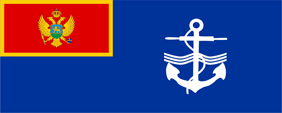 |
seit/since 2010, |
historische Flaggen – historical Flags: |
|
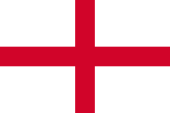 |
1878–1880, Handelsflagge – merchant flag, Seitenverhältnis – ratio = 2:3, Quelle/Source, nach/by: Flags of the World   |
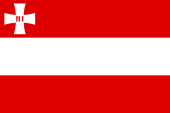 |
1880, National- und Handelsflagge – national and merchant flag, Seitenverhältnis – ratio = 2:3, Quelle/Source, nach/by: Flags of the World |
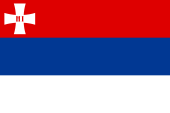 |
1880–1881, National- und Handelsflagge – national and merchant flag, Seitenverhältnis – ratio = 2:3, Quelle/Source, nach/by: Flags of the World |
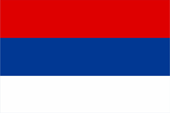 |
1881–1918, National- und Handelsflagge – national and merchant flag, Seitenverhältnis – ratio = 2:3, Quelle/Source, nach/by: Flags of the World |
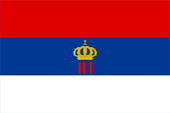 |
1881–1918, Marine- und Kriegsflagge – naval and war flag, Seitenverhältnis – ratio = 2:3, Quelle/Source, nach/by: Flags of the World |
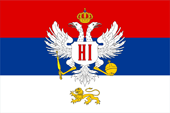 |
1910–1918, Staatsflagge – state flag, Seitenverhältnis – ratio = 2:3, Quelle/Source, nach/by: World Statesmen |
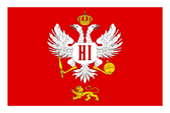 |
1910–1916, Flagge des (letzten) Königs von Montenegro Nikita (Nikolaus) I. – flag of the (last) King of Montenegro Nikita (Nikolaus) I., Seitenverhältnis – ratio = 2:3, Quelle/Source, nach/by: World Statesmen |
 |
1941–1944, Nationalflagge – national flag, Seitenverhältnis – ratio = 2:3, Quelle/Source, nach/by: Wikipedia (EN) |
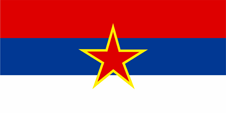 |
1947–1993, Flagge Montenegros in der SFRJ – flag of Montenegro within the SFRY, Seitenverhältnis – ratio = 1:2, Quelle/Source, nach/by: World Statesmen |
 |
1993–2004, |
Bedeutung/Ursprung der Flagge – Meaning/Origin of the Flag: |
|||||
| Die heutige Flagge Montenegros wurde am 12.07.2004 angenommen. Sie ist einfarbig rot mit einem goldenen Rand und zeigt in der Mitte einen goldenen Doppeladler. Im Brustschild des Adlers und unterhalb des Adlers ein goldener schreitender Löwe, ein altes montenegrinisches Nationalsymbol. Aus der Vergangenheit des Landes sind rote Flaggen bekannt, oft mit einem Kreuz oder mit einem Doppeladler. Alles heraldische Symbole, die auf das byzantinische Reich zurückreichen, denn Zeta, wie das Land früher hieß, war anfänglich ein byzantinisches Lehen. Die rote Flagge mit dem Doppeladler scheint sich als Flagge des Monarchen bis in die Neuzeit erhalten zu haben. Sie stand Modell für die heutige Flagge. Die Einführung einer Flagge als Nationalsymbol lies in Montenegro auf sich warten. Erst um 1878 sind weiße Flaggen mit einem roten Georgskreuz auf Handelsschiffen nachgewiesen. Nach dem Wiener Kongress im Jahre 1878 kam das Land unter österreichischen Schutz und die Handelsschiffe orientierten sich an den Farben Östereichs. Lediglich ein kleines Kreuz in der Oberecke markierte den Unterschied. Schon ein Jahr später wurde diese Flagge auf die Panslawischen Farben umgestellt, dem Modell Serbiens in rot-blau-weiß folgend. Viele slawische Völker schufen sich in der Zeit nach 1848 (dem Jahr der Revolutionen) – im Zusammenhang mit einem erstarkenden slawischen Nationalismus – eigene Flaggen. Dabei spielte der Panslawismus eine bedeutende Rolle, eine politische Bewegung des 18./19. Jahrhunderts, die alle Slawen in einer Nation einen wollte. Die meisten slawischen Völker lebten jedoch in dieser Zeit unter österreichischer, türkischer oder auch deutscher Herrschaft. Der Panslawismus sah in Russland ein Vorbild, denn die Russen waren, neben Serbien und Montenegro, die einzige freie slawische Nation. Und so wurden die Farben der russischen Flagge zum Idol der Panslawisten, und letztlich farbliches Vorbild bei der Gestaltung der Flaggen vieler slawischer Nationen. Diese Flaggen trugen und tragen bis auf wenige Ausnahmen die russischen Farben Weiß, Blau und Rot als gemeinsames Merkmal. Daher wird diese Farbkombination "Panslawische Farben" genannt. Die Monarchie wurde im Ersten Weltkrieg, an dem sich Montenegro auf der Seite der Entente beteiligte, im Jahre 1916 durch den Einmarsch von Truppen aus Österreich-Ungarn beendet und der König floh ins Ausland. Der König von Serbien einigte 1918 die südslawischen Völker unter seine Krone. Im Königreich der Serben, Kroaten und Slowenen (ab 1929 Jugoslawien genannt) gehörte Montenegro zur Banschaft (Provinz) Zeta. In der 1945 durch Tito proklamierten Föderativen Volksrepublik Jugoslawien konnten die südslawischen Nationen in ihren Republiken ihre Nationalfarben (meist Kombinationen der Panslawischen Farben) wieder auf eigenen Flaggen verwenden. Jedoch musste, wegen dem politischen System, ein roter Stern in der Mitte der Flagge verwendet werden. Mit dem Zusammenbruch des sozialistischen Systems verließen zwischen 1991 und 1992 Slowenien, Kroatien, Makedonien und Bosnien-Herzegowina den jugoslawischen Staat. Im April 1992 schlossen sich die beiden verbleibenden Staaten Serbien und Montenegro zur "Föderativen Republik Jugoslawien" zusammen, und am 27.04.1992 wurde der rote Stern ersatzlos von der Nationalflagge entfernt. Die beiden verbleibenden Mitgliedsstaaten verwendeten innerhalb des neuen Jugoslawiens gleiche Flaggen in rot-blau-weiß. Zur Unterscheidung wurde die Flagge Montenegros im Format 1:3 dargestellt. Im Jahre 2004 wurde dann die heutige Flagge Montenegros eingeführt, "Jugoslawien" hieß inzwischen "Bundesrepublik Serbien und Montenegro". Die Föderation wurde dann 2006 aufgelöst. |
The today's flag of Montenegro was adoped on the 12th of July in 2004. It
is single-coloured red with a golden border and shows in the middle a
golden twin-eagle. In the chest-shield of the eagle and below the eagle a
golden going lion, a ancient Montenegran national symbol. From the
country's past, red flags are known, often with a cross or with a double
eagle. All these are heraldic symbols dating back to the Byzantine Empire,
because Zeta – the country was former called in this way – was initially a
Byzantine fiefdom. The red flag with the double eagle appears to have been
preserved as the monarch's flag until modern times. It stood model for
today's flag. The introduction of a flag as a national symbol was waiting in Montenegro. It was not until 1878 that white flags with a red George Cross were detected on merchant ships. After the Congress of Vienna in 1878, the country came under Austrian protection and the merchant ships were oriented towards the colours of Austria. Only a small cross in the upper corner marked the difference. Just one year later, this flag was switched to the Panslavic colors, following the model of Serbia in red-blue and white. Many Slavic nations create on the 19th century own flags – in context with a growing Slavic nationalism. Thereby played the Panslavism an important roll, a political movement of the 18th/19th century, which would unite all Slavs in one nation. The most Slavic nations however lived in this times under Austrian, Turkish or even German rule. The Panslavism saw in Russia a model, because the Russians were, apart from Serbia and Montenegro, the only free Slavic nation. In this way the colours of the Russian flag became to an idol of the Panslavists, and in the end to a colour's pattern in the designing of the flags of many Slavic nations. Those flags carried and carry except few exceptions the Russian colours white, blue and red as mutual attribute. From there this colour's combination is named "Panslavic Colours". The monarchy was ended in 1916 by the invasion of troops from Austria-Hungary during the First World War, and the king fled abroad. Montenegro participated in the First World War on the side of the Entente. The King of Serbia unified the South Slavic nations under his crown in the year 1918. In the Kingdom of Serbs, Croats and Slovenes (called Yugoslavia from 1929) Montenegro belonged to the Banovina (province) of Zeta. In the Federal People's Republic of Yugoslavia, proclaimed by Tito in 1945, the South Slavic nations were able to use their national colors (mostly combinations of Panslavic colors) on their own flags again, in their own republics. However, because of the political system, a red star had to be used in the middle of the flag. With the collapse of the socialistic system left the countries Slovenia, Croatia, Macedonia and Bosnia-Herzegovina the Yugoslav state between 1991 und 1992. In April 1992 joined the both remaining countries Serbia and Montenegro to the "Federative Republic of Yugoslavia", and on the 27th of April in 1992 the red star was removed without replacement from the national flag. The two remaining member states used equal flags in red-blue-white within the new Yugoslavia. For distinction, the flag of Montenegro was presented in the format 1:3. In 2004, the current flag of Montenegro was introduced. The Federation of "Yugoslavia" was now called "Federal Republic of Serbia and Montenegro". The federation was dissolved in 2006.
Quelle/Source:
Die Welt der Flaggen,
Flaggen und Wappen der Welt,
Wikipedia (EN), Volker Preuß |
| |||
Wappen – Coat of Arms: |
|
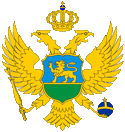 |
seit/since 2004, Wappen von Montenegro – coat of arms of Montenegro, Quelle/Source, nach/by: Wikipedia (EN) |
historische Wappen – historical Coats of Arms: |
|
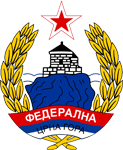 |
1945–1947, Wappen von Montenegro – coat of arms of Montenegro, Quelle/Source, nach/by: User:Stefke, CC BY-SA 3.0, via Wikimedia Commons |
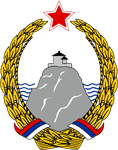 |
1947–1963, Wappen von Montenegro – coat of arms of Montenegro, Quelle/Source, nach/by: w:en:User:Stefke, CC BY-SA 3.0, via Wikimedia Commons |
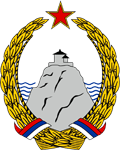 |
1963–1994, Wappen von Montenegro – coat of arms of Montenegro, Quelle/Source, nach/by: User:Slashme, CC BY-SA 4.0, via Wikimedia Commons |
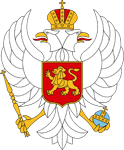 |
1994–2004, Wappen von Montenegro – coat of arms of Montenegro, Quelle/Source: prof. Bogdan Kršić[3]([4] archived), Public domain, via Wikimedia Commons |
Bedeutung/Ursprung des Wappens – Meaning/Origin of the Coat of Arms: |
|
| Das Wappen Montenegros stammt in der oben gezeigten Form aus dem 19. Jahrhundert. Seine Wurzeln hat es jedoch im Mittelalter. Montenegro ist als serbisches Fürstentum aus den Trümmern des nach 1355 zerfallenen Großserbischen Reiches entstanden. An seiner Stelle befand sich zwischen dem 9. und dem Anfang des 12. Jahrhunderts das serbische Fürstentum Zeta, das ein Lehen des Byzantinischen Reiches war. So ist es kein Zufall, das die montenegrinische Heraldik mit dem silbernen Doppeladler an die Heraldik des Byzantinischen Reichs erinnert. Auch in der Religion setzte man das christlich-orthodoxe Erbe von Byzanz fort. | The coat
of arms Montenegro descends in the above showed form from the 19th century.
Its roots has it however in the middle ages. Montenegro arised as Serbian
principality out of the ruins of the after 1355 crumbled Great Serbian
Empire. On its position was situated the Serbian Principality of Zeta between the 9th and beginning of the 12th century, which was a fiefdom of the Byzantian Empire. In this way it is not a random accident, that the Montenegran heraldry with the silvery double-eagle remembers the heraldry of the Byzantian Empire. As well in the religion was continued the christian-orthodox legacy of Byzantium. |
| Montenegros Doppeladler trägt und trug zeitweise ein Brustschild auf dem ein goldener, schreitender Löwe zu sehen ist. Zeitweise tauchte der Löwe auf Flaggen auf, außerhalb des Adlers, und dies vor allem dann, wenn im Brustschild die Initialen des Herrschers zu sehen waren. Über den Ursprung des Adlers ist nichts bekannt, möglicherweise ist er mit der Dynastie Njegoš in Verbindung zu bringen, die seit 1782 an der Macht war. | Montenegro's
double eagle wears and weared at times a chest shield on which a golden,
marching lion can be seen. Sometimes, the lion appeared on flags, outside
the eagle, especially when the ruler's initials could be seen in the chest
shield. Nothing is known about the origin of the eagle, possibly he is associated with the dynasty of the Njegoš-Family, which had been in power since 1782 |
| Im sozialistischen Jugoslawien (1946–1992) wurde ein neues, mit kommunistischer Symbolik ausgestattetes Landeswappen angenommen. Es zeigte den Berg Lovcen im Süden Montenegros, auf den der Name des Staates zurückgeht. | In the
socialistic Yugoslavia (1946–1992) was adoped a new, with communist
symbolism furnished coat of arms. It showed Mount Lovcen in southern
Montenegro, to which the name of the state goes back. |
| Quelle/Source: Wikipedia (EN), Volker Preuß | |
Flugzeugkokarde – aircraft roundel: |
|
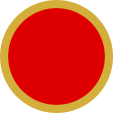 |
2006–2018, Flugzeugkokarde – aircraft roundel Quelle/Source: nach/by Wikipedia (EN) |
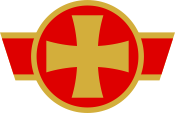 |
seit/since 2018, Flugzeugkokarde – aircraft roundel Quelle/Source: nach/by Wikipedia (EN) |
Landkarten – Maps: |
Lage – Position: |
Landkarte des Landes – Map of the Country: |
Die
Staaten des früheren Jugoslawien – The countries of former Yugoslavia: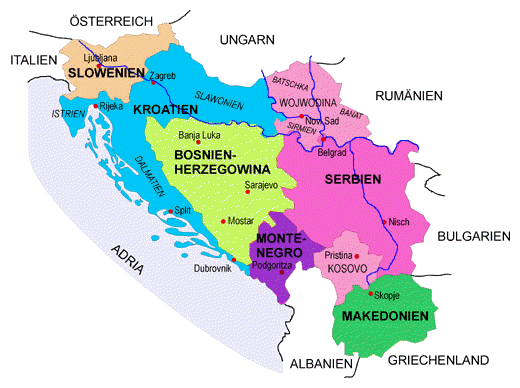 Landkarte/Map: Volker Preuß |
Zahlen und Fakten – Numbers and Facts: |
|
|
|
|
|
|
|
|
|
|
|
|
|
|
|
|
|
|
|
Geschichte: |
| Antike ·
Besiedelung durch thrakische und illyrische Stämme 33–29 v.Chr. · römische Eroberung 395 · bei der Teilung des Römischen Reiches kommt das heutige Montenegro an das Oströmische Reich (Byzanz) 6./7. Jahrhundert · Einwanderung der Serben, Entstehung der serbischen Fürstentümer Zeta, Bosnien und Raschka (Raszien) als byzantinische Lehen 1040 · Zeta macht sich von Byzanz unabhängig 1077 · Zeta wird Königreich 1090 · Zeta vereinigt Bosnien und Raschka unter seiner Führung 1138 · Zeta verliert Bosnien und Raschka wieder 1168 · Raschka wird wieder byzantinisches Lehen 1180 · Raschka wird von Byzanz unabhängig 1183 · Raschka übernimmt die Macht in Zeta 1217 · Raschka wird zum Königreich Serbien erhoben 13./14. Jahrhundert · Serbien erobert Makedonien und Bosnien, Epirus, Thessalien und Albanien 1346 · Stephan Dusan wird zum "Kaiser der Serben und Griechen" gekrönt 1355 · Tod von Kaiser Stephan, das Großserbische Reich zerfällt in Einzelstaaten, in Zeta ergreift die Dynastie der Balschitschi die Macht 1371 · die Türken schlagen die Serben an der Maritza 1389 · die Türken schlagen die Serben auf dem Amselfeld, Serbien wird tributpflichtig, Zeta kann seine Unabhängigkeit bewahren 1421 · die Dynastie der Balschitschi endet 1427 · in Zeta ergreift die Dynastie der Tschernojevitschi die Macht 1499 · es gelingt den Türken die Ebenen von Zeta zu erobern, Zeta akzeptiert eine nominelle Osmanische Oberhoheit ca.1500 · an der Küste eindringende Venezianer prägten für das Fürstentum Zeta den Begriff Montenegro ("Montagna negra" – ursprünglich gemeint war der wegen seines Basaltgesteins "Schwarzer Berg" genannte Berg Lovcen im Süden des Landes) 1516 · die Dynastie der Tschernojevitschi endet 1516–1697 · die Bischöfe von Tschetinje üben die Macht im Lande aus 1697 · der Metropolit Danilo Petrovic Njegoš (= Erzbischof Danilo, aus der Familie Petrovic, vom Stamme der Njegoš) ernennt sich zum Vladiken (geistlicher und weltlicher Herr Montenegros), und begründet somit die Monarchie neu 1685 · Montenegro wird faktisch vom Osmanischen Reich unabhängig 1798 · der türkische Sultan erkennt den Vladiken Peter II. Njegoš als Fürsten von Montenegro an 1852 · der Vladike Danilo Njegoš wandelt Montenegro in ein weltliches Fürstentum um und bindet sich politisch an Russland 1876 · Krieg Montenegros gegen das Osmanische Reich 1877–1878 · Montenegro beteiligt sich am russisch-türkischen Krieg, erhebliche Gebietsgewinne 1878 · Berliner Kongress, Montenegro bekommt weitere Gebiete zugesprochen, Annäherung an Österreich-Ungarn 1905 · Fürst Nikolaus erlässt eine Verfassung 1910 · Montenegro wird zum Königreich proklamiert 1912–1913 · Montenegro beteiligt sich an den Balkankriegen, erhebliche Gebietsgewinne 1914 · Montenegro beteiligt sich am Ersten Weltkrieg auf der Seite der Entente 1916 · österreichisch-ungarische Besetzung, der König flieht ins Ausland 1918 · die Monarchie wird abgeschafft, Montenegro wird Teil des "Königreichs der Serben, Kroaten und Slowenen", das 1929 in Jugoslawien umbenannt wurde, Montenegro wird Bestandteil der Banschaft (Provinz) Zeta 1941 · Jugoslawien wird im Verlauf des Zweiten Weltkriegs aufgelöst, Montenegro ist bis 1944 unabhängig 1941–1946 · Jugoslawien ist während des Zweiten Weltkriegs Schauplatz eines erbarmungslosen Partisanen- und Bürgerkriegs zwischen Kommunisten (unter J.P.Tito), Republikanern, Monarchisten und Nationalisten, die Kommunisten setzen sich durch 29.11.1945 · Ausrufung der "Föderativen Volksrepublik Jugoslawien" durch Tito 31.01.1946 · Ausrufung der Volksrepublik Montenegro (innerhalb des kommunistischen Jugoslawiens) 11.04.1963 · Ausrufung der Sozialistischen Republik Montenegro (innerhalb des kommunistischen Jugoslawiens) 03.08.1991 · Ausrufung der Republik Montenegro (innerhalb Jugoslawiens) 1991–1992 · Jugoslawien löst sich in seine Einzelstaaten auf 27.04.1992 · Serbien und Montenegro proklamieren die „Bundesrepublik Jugoslawien” 1991–1995 · Krieg zwischen Jugoslawien und Kroatien/Bosnien-Herzegowina 04.02.2003 · neue Verfassung, Jugoslawien wird durch die Bundesrepublik Serbien und Montenegro abgelöst 21.05.2006 · Volksabstimmung über eine Trennung von Serbien, 55,4% Zustimmung 13.07.2006 · Unabhängigkeitserklärung |
History: |
| antiquity
· settlement by Thrakian and Illyrian tribes 33–29 B.C. · Roman conquest 395 · at the partition of the Roman Empire comes the today's Montenegro to the East Roman Empire (Byzantium) 6th/7th century · immigration of the Serbs, nascence of the Serbian principalities of Zeta, Bosnia and Rashka (Rascia) as Byzantian fiefdoms 1040 · Zeta enforces its independence from Byzantium 1077 · Zeta becomes a Kingdom 1090 · Zeta unites Bosnia and Rashka under it's leadership 1138 · Zeta loses Bosnia and Rashka again 1168 · Rashka becomes a Byzantian fiefdom 1180 · Rashka gets independent from Byzantium 1183 · Rashka takes over the power in Zeta 1217 · Rashka gets levied to the Kingdom of Serbia 13th/14th century · Serbia conquers Macedonia and Bosnia, Epirus, Thessalia and Albania 1346 · Stephan Dusan gets crowned to the "Emperor of the Serbs and Greeks" 1355 · death of Emperor Stephan, the Great Serbian Empire disintegrates into particular states, in Zeta seizures the power the dynasty of the Balshitshi 1371 · the Turks strike the Serbs near the Maritza River 1389 · the Turks strike the Serbs on the Amselfeld, Serbia becomes tributary, Zeta can keep its independence 1421 · the dynasty of the Balshitshi ends 1427 · in Zeta seizures the power the dynasty of the Tchernojevichi 1499 · the Turks succeed in conquest of the plains of Zeta, Zeta accepts a nominal Ottoman supremacy ca. 1500 · on the coast invading Venetians use for the Principality of Zeta the word Montenegro ("Montagna negra" – originally was meaned the because of its basalt rocks "Black Bountain" named Lovcen Mountain in the south of the country) 1516 · the dynasty of the Tchernojevichi ends 1516–1697 · the bishops of Tchetinje have the power in the country 1697 · the Metropolit Danilo Petrovic Njegoš (= archbishop Danilo, from the Petrovic family, from the tribe of the Njegoš) nominates hisself to the Vladike (spiritual and secular Lord of Montenegro), and establishes thus the monarchy again 1685 · Montenegro is independent from the Ottoman Empire 1798 · the Turkish Sultan recognizes the Vladike Peter II. Njegos as Prince of Montenegro 1852 · the Vladike Danilo Njegoš transforms Montenegro into a secular principality and ties it politically to Russia 1876 · war of Montenegro against the Ottoman Empire 1877–1878 · Montenegro joins in the Russian-Turkish War, substantial territorial winnings 1878 · Berlin Congress, Montenegro gets awarded furthermore territories, convergence to Austria-Hungary 1905 · Prince Nicolaus introduces a constitution 1910 · Montenegro gets proclaimed to a kingdom 1912–1913 · Montenegro joines in the Balkan Wars, substantial substantial territorial winnings 1914 · Montenegro joines in the First World War on the side of the Entente 1916 · Austria-Hungaryn occupation, the King flees abroad 1918 · the monarchy gets abolished, Montenegro becomes a part of the "Kingdom of the Serbs, Croats and Slovenes", which was renamed in 1929 into Yugoslavia, Macedonia becomes part of the Province of Zeta 1941 · Yugoslavia gets dissolved during the Second World War, Montenegro is independet until 1944 1941–1946 · Yugoslavia is during the Second World War location of a merciless partisan and civil war between communists (under J.P.Tito), republicans, monarchists and nationalists, the communists had exulted 29th of November in 1945 · proclamation of the "Federative People's Republic of Yugoslavia" by Tito 31st of January in 1946 · proclamation of the People's Republic of Montenegro (within communist Yugoslavia) 11th of April in 1963 · proclamation of the Socialist Republic of Montenegro (within communist Yugoslavia) 3rd of August in 1991 · proclamation of the Republic of Montenegro (within Yugoslavia) 1991–1992 · Yugoslavia dissolves into its particular states 27th of April in 1992 · Serbia and Montenegro proclaim the „Federal Republic of Yugoslavia” 1991–1995 · war between Yugoslavia and Croatia/Bosnia-Hercegovina 4th of February in 2003 · new constitution, Yugoslavia is replaced by the Federal Republic of Serbia and Montenegro 21st of May 2006 · plebiscite about a separation from Serbia, 55,4% agreement 13th of July 2006 · declaration of independence |
| Quelle/Source: Atlas zur Geschichte, Wikipedia (D), World Statesmen |
Ursprung des Landesnamens – Origin of the Country's Name: |
|
| An der Küste eindringende Venezianer prägten für das Fürstentum Zeta den Begriff Montenegro ("Montagna negra"). Das bezog sich ursprünglich auf den wegen seines Basaltgesteins "Schwarzer Berg" genannten Berges Lovcen im Süden des Landes. | Venetians invading the coast used the name Montenegro for the Principality of Zeta ("Montagna negra"). This originally referred to Mount Lovcen in the south of the country, called "Black Mountain", because of its black basalt rock. |
| Quelle/Source: Atlas der wahren Namen | |